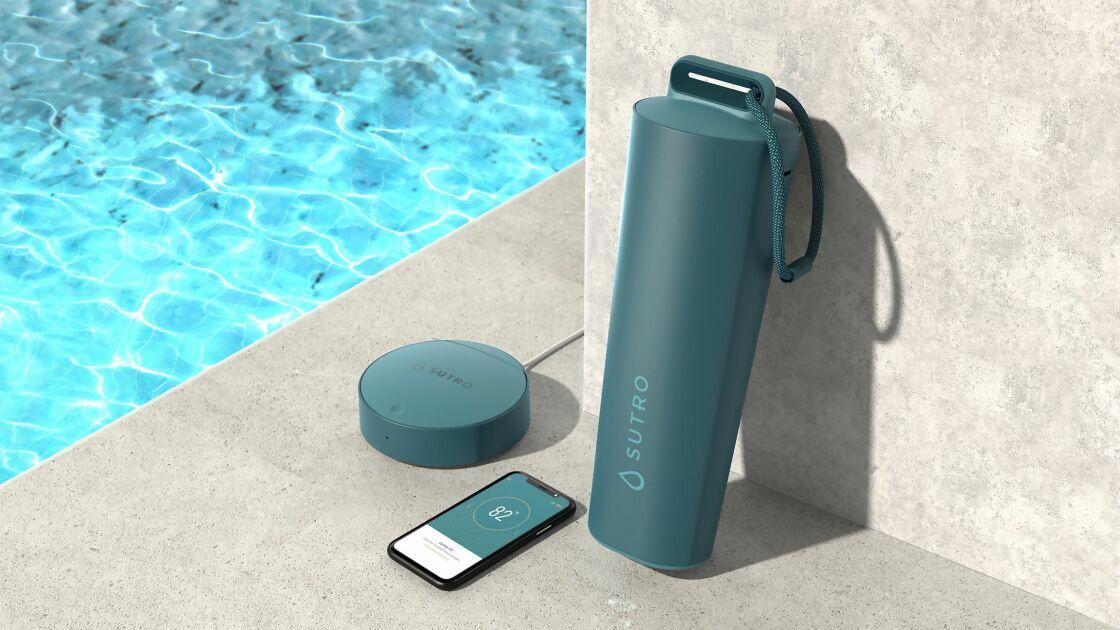Owning your own swimming pool is definitely a luxury. Achieving and maintaining its water quality, however, is a challenge, and one that requires you to keep your pool's chemistry in a constant state of delicate balance. The $295 WaterGuru Sense is designed to make that task less of a chore. Instead of testing pool water manually, you can use this gadget to handle it automatically. Each day, it keeps tabs on chlorine, pH and water temperature, working with both fresh and salt water pools. The WaterGuru can even assess the level of water flow in your pool's circulation system and notice if anything is amiss.
Once the data is gathered, you can view your pool's water conditions on your Android or iOS device via the WaterGuru mobile app. The app will also ping you with phone-wide alerts when it detects a problem, and it offers advice too, with specific steps you can take to correct the issue.
7.1WaterGuru Sense
$295 at WaterGuruLike
Don't Like
I don't like everything about the WaterGuru Sense. While it does let you test your pool on demand, the process is slow, taking about 20 minutes for the machine to generate a water quality report. And, with sensors for just four types of data, the WaterGuru Sense is far from the most capable monitoring system you can buy. Other products, such as the Sutro, measure bromine and alkalinity levels, too.

This makes the WaterGuru Sense best for pool owners who'd like a helpful, uncomplicated testing tool that doesn't require additional subscription fees. Those who want a more diverse range of data should look to more robust solutions from Sutro or pHin.
Simple to set up
The WaterGuru Sense consists of two main components. First is a rectangular block about the size of a construction brick which houses the system's array of sensors. A skimmer lid comprises the second component. Inside are four "C" disposable batteries that power the unit. A cord connects the two sections.
With batteries installed, you simply lower the sensor block into your pool's skimmer basket. The skimmer lid sits above. It's built to work with standard 8-inch circular pool skimmers. The next step is to download the WaterGuru app (iOS and Android) and follow provided device and network setup instructions. The Sense is equipped with Bluetooth and Wi-Fi radios for this purpose.
Just make sure to confirm that your home's Wi-Fi network reaches your pool. To ensure a strong signal, I had to set up a Wi-Fi range extender on the CNET Smart Home's basement porch.
Life with the WaterGuru Sense
Once up and running, the WaterGuru Sense performed well. The first water test confirmed that our pool's water flow was too low. This matched advice from our local pool maintenance service. A technician had advised us earlier to add more water to the pool. During especially hot weather, water can escape the pool via evaporation.
In fact, the water line was low enough to impede the operation of the pool's water pump. In this situation the water pump is forced to work harder. Over time this exertion could cause the pump motor to fail.
It took four business days (32 hours) to raise the water line to the optimal level (about 6 inches). After that, the WaterGuru registered normal water flow levels. Still, at 7 parts per million the concentration of free (active) chlorine was higher than it should have been. The ideal level is 3 ppm -- high enough to destroy germs, algae and other unpleasant organisms, but low enough not to be an irritant or pose a health risk. When I checked the Frog Leap pool care system, I saw that its dial was cranked to the maximum setting (10).
The WaterGuru app advised me to lower the pool system's chlorine (trichlor) flow rate. I carefully turned the chlorination dial down to 8. After 24 hours, the WaterGuru reported a free chlorine level of 5 ppm, within the normal range. Further tweaks will certainly be necessary, but I'm now confident I have the tools to handle them. I can either perform these treatments myself, or make informed requests to our pool maintenance service.
The verdict
The $295 WaterGuru Sense costs a lot more than the simple chemical test kits. Still, it's hard to beat the automated convenience of daily electronic testing -- and unlike the $349 pHin Smart Water Monitor and $199 Sutro, there are no extra monthly monitoring subscription fees.
For more in-depth testing, like bromine and alkaline levels, you'll have to go with the pricier yet more capable pHin or Sutro systems, because the WaterGuru only tests forchlorine, pH, and water flow. Still, if that's all you need (and if you hate subscription fees), then the WaterGuru Sense is a great choice.








